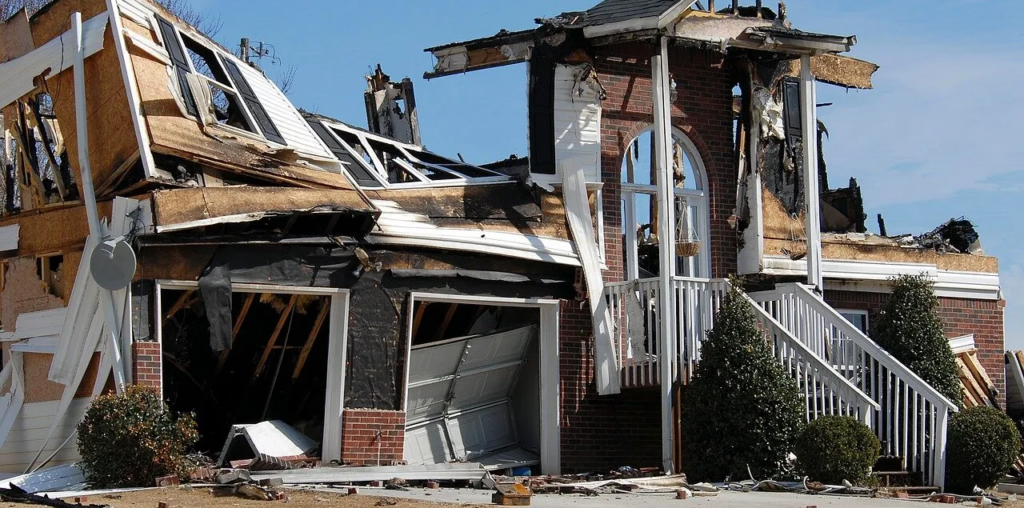Selling a burned house in North Carolina comes with unique challenges, but one of the most critical factors in the process is pricing. Setting the right price can determine whether your home sells quickly or lingers on the market. If you overprice it, buyers may avoid it, assuming it’s too much trouble. If you underprice it, you might lose money unnecessarily. This guide will walk you through the process of pricing your burned house correctly so you can sell it successfully.
Understanding the Market for Fire-Damaged Homes
Before setting a price, you need to understand how fire-damaged homes are valued. Unlike a typical home, a burned house is not just measured by its size, location, and condition—it also factors in the extent of the fire damage. Buyers will be looking at what’s left of the structure, how much repair work is needed, and whether it makes financial sense for them to invest in it.
Get a Professional Property Assessment
One of the first steps in pricing your burned house is to hire a professional to assess the damage. A real estate appraiser or contractor can help determine the cost of repairs and the current market value. Here’s what they will typically evaluate: For more details, visit www.sellfiredamagedhousenc.com.
- Structural damage to the foundation, walls, and roof
- Electrical and plumbing systems
- Interior damage, including smoke and water damage
- Compliance with building codes and permits
Once you have a clear assessment, you can use this information to determine how much a buyer might be willing to pay.
Compare Similar Fire-Damaged Properties
A good pricing strategy involves looking at other burned houses in your area that have sold recently. Since these types of sales are less common, you may need to research beyond your immediate neighborhood. Check real estate listings, auction sales, and even foreclosure reports. Look for properties with similar levels of damage and note how long they stayed on the market and at what price they sold.
Factor in the Cost of Repairs
Buyers will always consider the cost of fixing the home. If your house would be worth $300,000 fully repaired but needs $100,000 in repairs, many buyers will expect to pay much less than $200,000 to make it worth their time. A common rule investors follow is the “70% rule,” meaning they will only pay up to 70% of the home’s after-repair value, minus repair costs.
Using the earlier example:
- After-repair value: $300,000
- Repair costs: $100,000
- Maximum investor offer (70% rule): $110,000
Understanding this formula helps you set realistic expectations for your price.
Be Transparent About the Damage
Buyers want to know exactly what they are getting into. If you try to hide the extent of the damage, it will likely backfire, causing deals to fall apart later. Instead, provide a detailed list of what’s damaged, what repairs are needed, and any steps you have already taken to clean up the property. This transparency can actually help you get a fair price because it builds trust with potential buyers.
Consider Selling As-Is vs. Making Repairs
If you’re struggling to decide on a price, one of the biggest factors is whether to sell the house as-is or invest in repairs before listing it. If you sell as-is, you will attract cash buyers, real estate investors, and house flippers who are looking for a good deal. If you make some minor repairs, such as clearing debris and improving curb appeal, you may be able to raise the price slightly. However, major repairs may not always give you a good return on investment, so consider them carefully.
Work with a Real Estate Agent Experienced in Fire-Damaged Homes
Pricing a burned house is not the same as pricing a typical home, so working with an agent who has experience in selling fire-damaged properties can be a huge advantage. They can help analyze market trends, negotiate with buyers, and ensure that you’re getting the best possible price.
Conclusion
Setting the right price for a burned house in North Carolina is all about understanding the damage, assessing repair costs, and comparing similar sales. A realistic price will attract the right buyers and help you sell your home faster. By following these steps, you can confidently list your home at a competitive price and move forward with the sale successfully.




